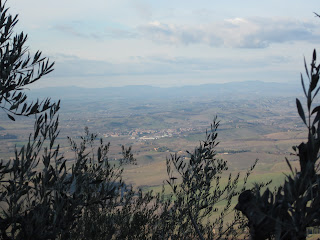My Down Jacket has been a life saver! It's really cold and wet here so I love snuggling up in it! I wear it everywhere. I made the mistake of wearing it while burning olive branches one day and got 5-6 little burn holes in it. Instead of losing down right and left I decided to attempt to sew the holes back together. Let's just say that Kearstin & Jennifer (my loyal sewing buddies) would not be impressed with my workmanship but it is holding together. Every time I look at the jacket I will remember my adventures here at Casa Raia! :)
My head lamp has been so useful in the cantina, looking into barrels, through bottles, and in the house as well to find toys under furniture. They loved my head lamp so much PJ even got one for himself!
Leggings have been a must! I wear them every day and the extra layer has saved me from freezing!
A good pair of sharp scissors are great to travel with!
My grey fleece is literally a second skin. I wear it all the time, every day, and am so happy to have it in the house, in the field, in the cantina, etc.
Sunglasses have been good protection from the sun, but more importantly they have served as "safety glasses" from flying vines and olive branches! I've been thinking of Safety Sandy and how she would be so proud of my safe work habits.
My iPod Nano is now my best friend. I listen to it every day while working. It goes with me in my pocket everywhere I go and when I have a few minutes alone to wait or while working, I am listening to great songs that were given to me by friends before I left. Feels like I have my friends with me whenever I want.
Mary Kay Satin Hands! I brought the hand lotion and the thick overnight moisturizing "paste" and I am soooo in love with it! My hands are getting a good workout every day and they feel incredibly pampered when I use this on them at night. It was a last minute luxury item I threw in but now I am so happy I did- it's more of a necessity here!
There are a few things I am also happy I have purchased here as well...
#1- Rubber Boots! I sink into mud that goes nearly up to my calves. I bought a pair of rubber boots that I can tuck my pant legs into and now I am good to go. They do nothing to keep my feet warm, but they do keep them clean and dry.
#2- Leather work gloves. A must have!!
#3- Cell phone. I bought the cheapest cell phone that is made here. I love it! It's my watch, my alarm clock & calculator. It's very handy and weights maybe 2 oz! It's no iPhone by any means, but it's all I need here.
-










































